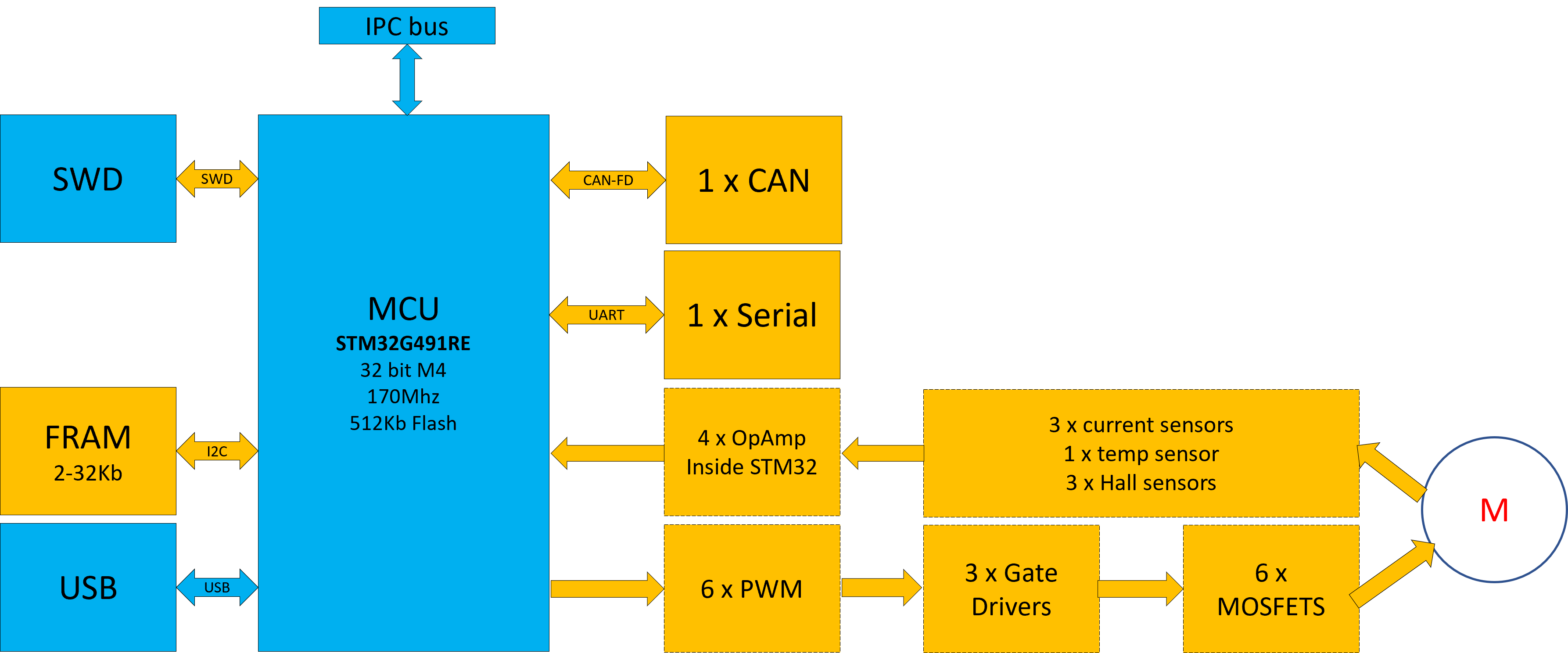I recently bought a test kit (ESC) from ST that I used 2 days on to create a motor controller, and I liked the design so I am using it as template for a new controller. You will remember that I created a “ThunderStick” using DRV8301, basically a controller very close to the Vedder design. But, I have created controllers closer to the ST design before using 4 discrete gate drivers, so I want to go back to this design and see if I can upgrade my ThunderStick to ThunderStick2 with a few changes. This is the real reason I bought STM32G491. The ST kit uses STM32G431 that is close to identical with less Flash.
I want a few changes from ST design:
- I need 60-100V MOSFET’s because I need 48V on the drones. 24V is to low as it makes it more difficult to drive the larger drones.
- I want a larger controller with proper connectors – more like my 100mm x 25mm Thunderstick.
- I want a similar heatsink as on Thunderstick.
- I add a FRAM (or SPI Flash) for storing variables.
- I add a serial interface, but uses CAN for control.
This is a quick draft so it might be changes, but I have done a few motor controllers now so I think I can manage one that has a good compromize on size/heating. The ST kit is cool, but close to useless because it is so small. Thunderstick size is larger and have a much better design to get rid of heat, meaning I should be able to achieve higher currents – more effect out. Thunderstick is also a very good form factor for larger drones that I focus on.
One of the things that is special with the G series is their analogue content. G431/G491 have 4 Programmable Op-Amps and Comparators as well as 12-16 bit ADC channels that is perfect for a small size motor controller. I am actually looking forward to redrawing this with KiCad because Thunderstick was hard to make a PCB with using Target.
Moving on – I have been working on my own PLC system for drones/homes for a while and will update many of the boards I have made and actually get them into production. Many of the boards have been experimental and been working well – which is not bad for a hobbyist.
